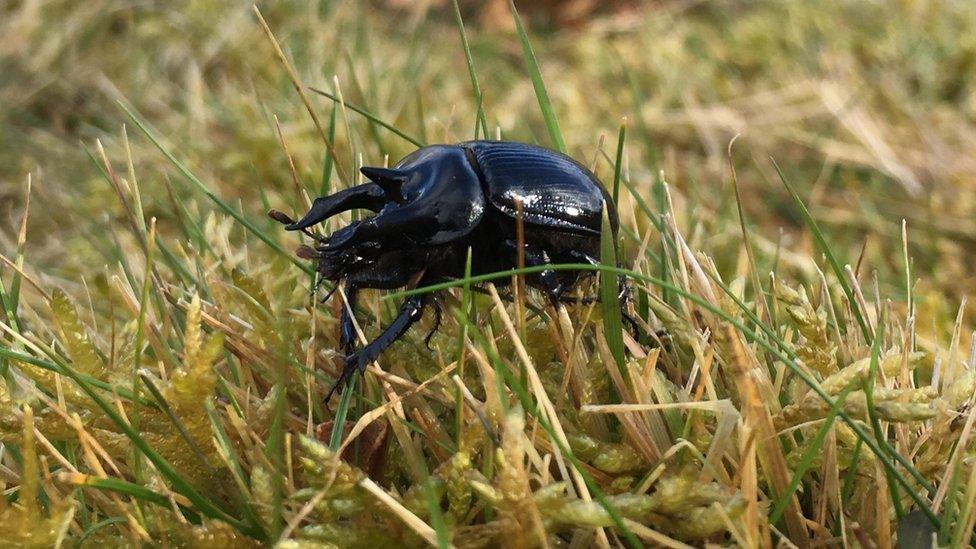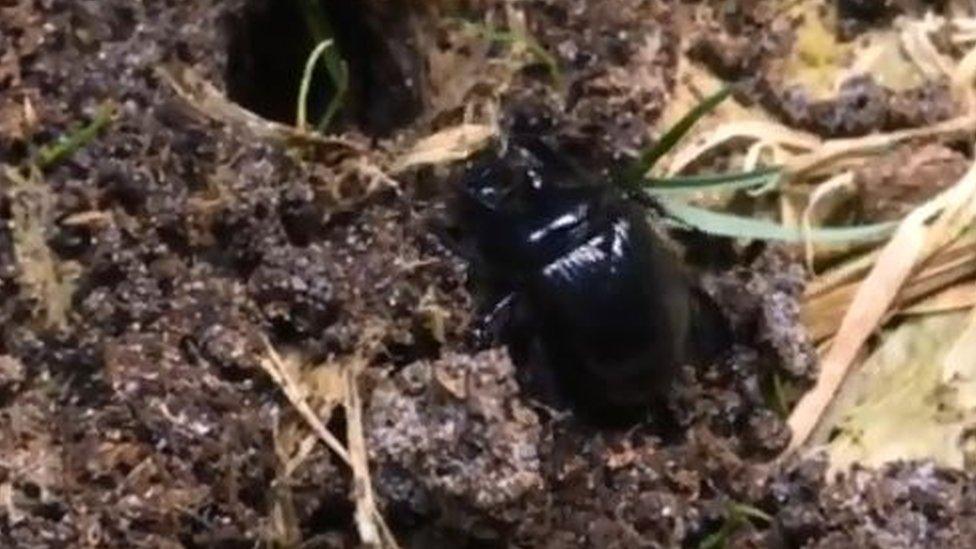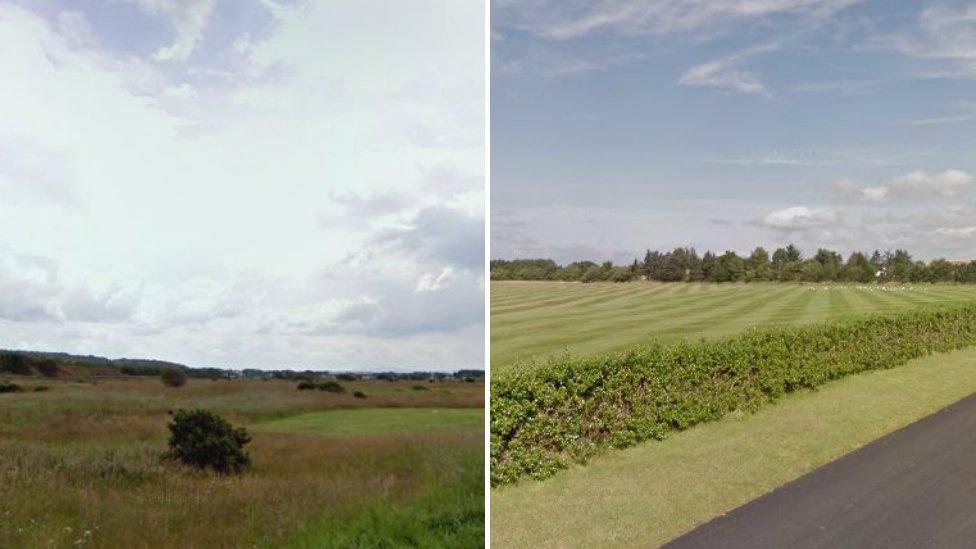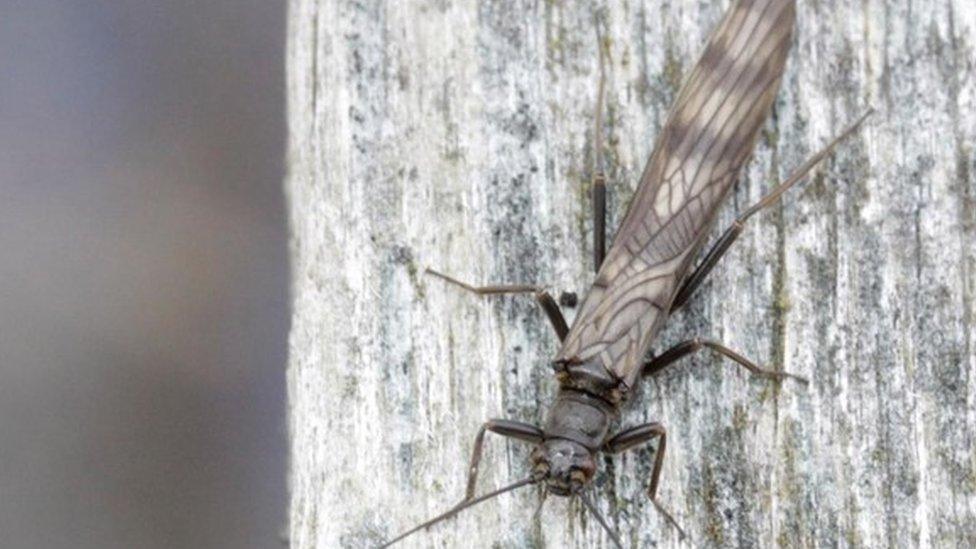Naturalists unearth rare dung beetle at two Ayrshire locations
- Published

The rare minotaur dung beetle was discovered in two locations in North Ayrshire
A rare dung beetle has been unearthed by the Scottish Wildlife Trust at two locations in North Ayrshire.
The minotaur beetles were found at Dundonald Links, external and at Gailes Marsh Wildlife Reserve, external near Irvine.
The species has only been recorded a handful of times in Scotland in the past 50 years.
Minotaur beetles are found in sandy grassland and heathland and are most active at night, feeding on dung, particularly rabbit droppings.
Gill Smart, the reserves manager at Scottish Wildlife Trust said: "It's really exciting to find a new rare species on our reserve. I'd heard from local naturalists that they are present on the Ardeer peninsula and that they were also likely to be found around Irvine.
"Once I learned the giveaway signs, I knew I'd seen their burrows before. We set up pitfall traps surrounded with rabbit poo to confirm that they were there and sure enough, two fell into our traps on the very first night.
"A couple of days later two colleagues were looking for amphibians at Gailes Marsh at night and went to look for the beetle burrows. They were delighted to find beetles feeding around their holes."

The minotaur beetle

One of the beetles travelling to its burrow
The minotaur beetle is a large, round dung beetle found in sandy grassland and heathland, where it feeds on rabbit droppings and other dung, mainly at night.
Adults emerge in autumn, but still need to mature in order to breed, so undergo an intense feeding period. If the weather is mild they may start breeding in early winter.
They nest in deep tunnels where they lay their eggs and provide dung for the larvae to feed on; they drag the dung back to their nest using their strong front legs.
The males use their "horns" to defend the nest. By the following summer, their cycle is completed and the adults will die to make way for the next generation.
Source: Wildlife Trust

The insects were found at Dundonald Links and Gailes Marsh

Gill Smart added: "Finding minotaur beetles makes it even more vital to protect the increasingly rare open sandy habitats that we have on our coastline. We need to prevent gorse and other vegetation from taking over these areas to ensure the beetles can carry on thriving here."
Ian Ferguson, from Dundonald Links, said: "Dundonald Links is home to lots of different kinds of wildlife. We're delighted that a new rare species has been found here by our friends at the Scottish Wildlife Trust."
- Published15 January 2018
